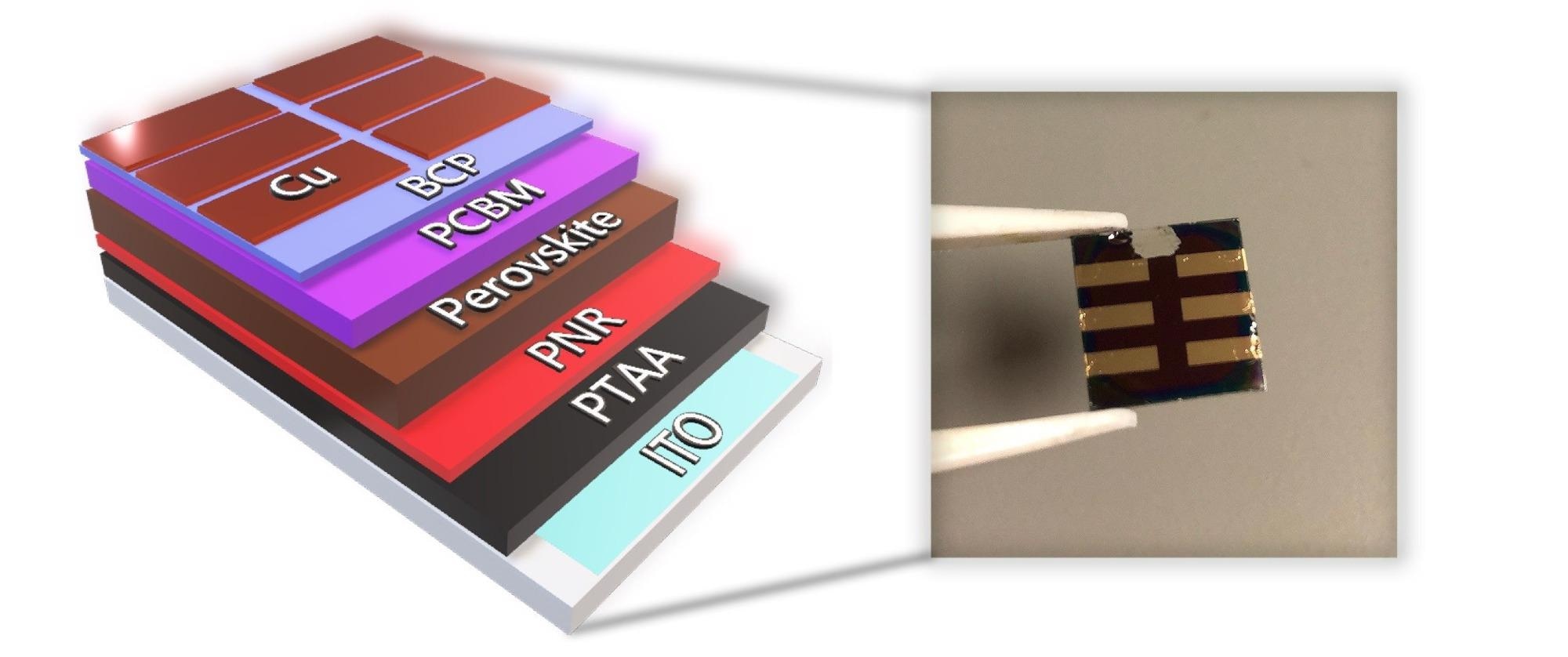Researchers have dramatically improved the efficiency of phosphorene nanoribbons by incorporating them into new kinds of solar cells.
 The solar cell and its layers. (Image Credit: T.J. Macdonald and T. Webb).
The solar cell and its layers. (Image Credit: T.J. Macdonald and T. Webb).
Originally produced in 2019, phosphorene nanoribbons (PNRs) are ribbon-like strands of the 2D material phosphorous, which, just like graphene, are made of single-atom-thick layers of atoms. Numerous theoretical studies have projected how the properties of PNRs could improve a wide range of devices, including biomedical sensors, quantum computers and batteries.
Despite these predictions, all these exciting properties are yet to be demonstrated in actual devices. For the very first time, a group headed by researchers from Imperial College London and University College London has used PNRs to considerably enhance the efficiency of a device – a new type of solar cell – to prove that the ‘wonder material’ could certainly live up to its hype.
The details are published in the recent edition of the Journal of the American Chemical Society.
First experimental evidence
Hundreds of theoretical studies have foreseen the exciting properties of PNRs, but no published reports have yet demonstrated these properties, or their translation into improved device performance. We are therefore delighted to not only provide the first experimental evidence of PNRs as a promising route for high-performance solar cells, but also showcase the versatility of this novel nanomaterial for use in next-generation optoelectronic devices.
Dr. Thomas Macdonald, Lead Researcher, Department of Chemistry, Centre for Processable Electronics, Imperial College London
The researchers combined the PNRs into solar cells developed from perovskites – a new type of material that is likely to be successful as scientists can effortlessly change how they work together with light to suit a variety of applications.
Perovskite solar cells are different from the traditional inflexible silicon-based solar cells as they can be produced from liquid solutions, enabling cost-effective printing into thin, flexible films. Novel nanomaterials, such as PNRs, can just be printed as an extra layer to enhance device efficiency and functionality.
On a par with traditional silicon solar cells, the researchers included PNRs and succeeded in producing perovskite solar cells with efficiency beyond 21%. Furthermore, the team experimentally proved how PNRs are capable of accomplishing this enhanced efficiency.
Unique electronic properties
The team demonstrated that PNRs enhance ‘hole mobility’ – a measure of the speed at which they travel via the material. As the opposite partner of electrons in electrical transport, ‘holes’ with their improved mobility help electrical current travel more efficiently between layers of the device.
According to the team, this experimental validation of the power of PNRs will assist researchers in creating new design rules for optoelectronic devices – those that detect or emit light.
Our results show that the predicted functional electronic properties of PNRs indeed translate to improved performance in application. This highlights the genuine importance and utility of this newly discovered nanomaterial and sets the benchmark for PNR-based optoelectronic devices.
Dr. Thomas Macdonald, Lead Researcher, Department of Chemistry, Centre for Processable Electronics, Imperial College London
Future studies focusing on PNRs in devices will permit researchers to realize more mechanisms for how they can enhance performance. The team will also discover how changing the surface of the nanoribbons will help in enhancing the exceptional electronic properties of the materials.
Journal Reference:
Macdonald, T.J., et al. (2021) Phosphorene Nanoribbon-Augmented Optoelectronics for Enhanced Hole Extraction. Journal of the American Chemical Society. doi.org/10.1021/jacs.1c08905.